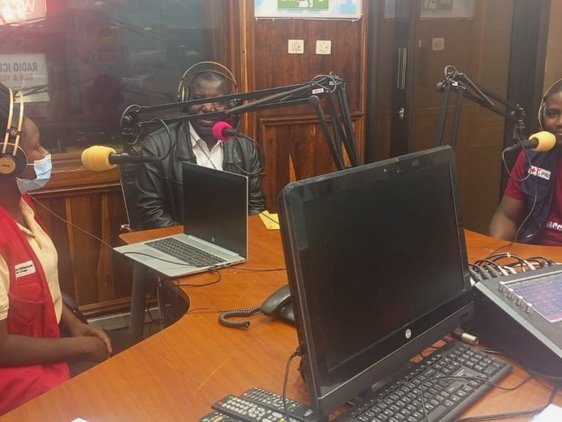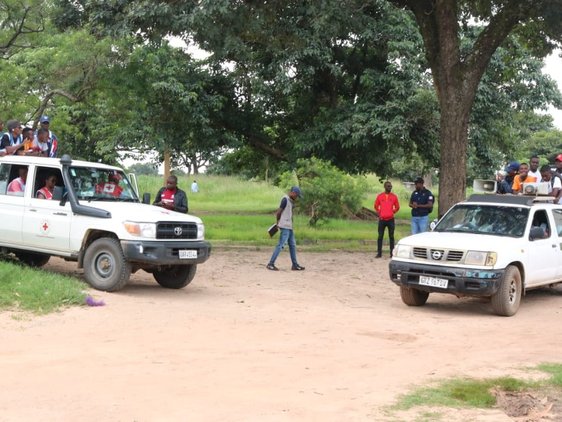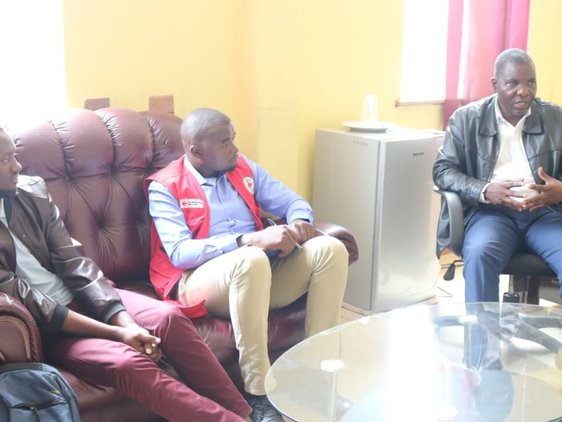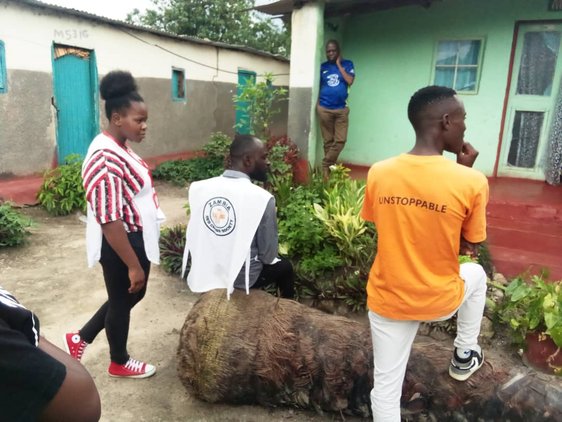Zambia activates its Early Action Protocol for Floods
The Zambia Red Cross Society activated its Early Action Protocol (EAP) for Floods after receiving a forecast that floods were likely to hit 10 districts across the country, potentially affecting more than 100,000 people. Through this activation, the organization has been helping people to prepare for the peak of the flood.
The impact-based forecast, issued on 22 January 2023 by the Global Flood Awareness System (GloFAS), predicted a flood with 20 years return period. The system identified Kitwe district in the Copper Belt Province as the region likely to suffer the highest impact, with an estimated 16,468 people (2,745 households) at risk. The floods were predicted to hit on 28 January.
During the seven-day lead time between the forecast and the predicted impact, and financed by preagreed funds from the Anticipatory Pillar of the IFRC’s DREF mechanism, the Zambia Red Cross Society implemented a series of anticipatory actions. These focused on water, sanitation and hygiene (WASH), health and shelter. These actions targeted all 2,745 households (6,000 people) in Wusakile ward, Kitwe district, where the impacts of the floods were expected to be highest.
Implementing anticipatory action
The Zambia Red Cross Society activated its EAP for Kitwe district on 22 January and operations started two days later:
- 24 January: Red Cross staff met key stakeholders at a district planning meeting, including the Disaster Management and Mitigation Unit, the Department of Social Welfare, the Ministry of Health and the local Red Cross branch.
- 25 January: activities included volunteer orientation, developing information and early-warning messages, mapping evacuation routes and safe havens. The team also began transmitting early warnings through radio and megaphones, and volunteers started house to house visits – activities which continued until 28 January.
- 26 January: registration of beneficiaries for the distribution of non-food items such as soap/chlorine, plastic bags to protect documents and goods, water-storage containers; a coordination meeting was held with national-level stakeholders to brief them on the process.
- 27 January: the distribution of non-food items began;trenches were dug to divert water away from at-risk houses.
- 28 January: due to the ongoing heavy rains, distributions and the digging of trenches continued.
- 30 January: a further briefing for stakeholders and report writing.
Kitwe continued to experience heavy rains over the weekend (27-29 January) and water levels on the Kafue Riverare still high, meaning further floods are expected in Kitwe for a few days.
Anticipatory action ahead of floods in Zambia

The Zambia Red Cross Society team joins a panel discussion on Radio Ichengelo during the dissemination of early-warning messages targeting communities in Kitwe. © Zambia Red Cross Society

Volunteers leave for the field. © Zambia Red Cross Society

The team from Zambia Red Cross Society HQ visits Mathews Mwewa, the acting commissioner for Kitwe District, on 25 January 2023. © Zambia Red Cross Society

The community sensitization on early warning and early action is conducted door to door, using a public address system and radio programmes. The aim is to mitigate the impacts of anticipated floods before they occur in Kitwe. © Zambia Red Cross Society

A woman from Malembeka area delivers her baby shortly after receiving non-food items in Kitwe. © Zambia Red Cross Society

The Zambia Red Cross Society team joins a panel discussion on Radio Ichengelo during the dissemination of early-warning messages targeting communities in Kitwe. © Zambia Red Cross Society
Volunteers leave for the field. © Zambia Red Cross Society
The team from Zambia Red Cross Society HQ visits Mathews Mwewa, the acting commissioner for Kitwe District, on 25 January 2023. © Zambia Red Cross Society
The community sensitization on early warning and early action is conducted door to door, using a public address system and radio programmes. The aim is to mitigate the impacts of anticipated floods before they occur in Kitwe. © Zambia Red Cross Society
A woman from Malembeka area delivers her baby shortly after receiving non-food items in Kitwe. © Zambia Red Cross Society
A further activation in Kafue district
As heavy rains continued to afflict Zambia, the trigger levels in the EAP for Floods were also met elsewhere. On 27 January, the trigger was reached in Namwala and Iterzi-terzi, but flash floods were already happening at that time and the Zambia Red Cross Society was unable to implement anticipatory actions. The next day, however, trigger was reached for Kafue District, ahead of floods expected to hit on 3 February 2023. Anticipatory actions began on 28 January, proceeding along a similar timeline as in Kitwe.
This is the second year in a row that major floods have hit Zambia. In January 2022, heavy rainfall caused flash floods in the Southern and Copperbelt Provinces. The IFRC supported disaster response efforts, allocating 373,157 Swiss francs (373,517 euros) for recovery efforts.
Many thanks to Jurg Wilbrink (IFRC) and Gloria Kunyenga (Netherlands Red Cross and IFRC) for their inputs to this article.
Further resources
- Green Economy Minister warns of heavy rains, thunderstorms in some parts of country
- Watch a video of anticipatory actions in Zambia (via Facebook)
- EAP Activation Notification Zambia: Floods (2023 floods)
- Final Report Zambia: Floods in Namwala and Ndola Districts (2022 floods)
- Early Warning Radio Message
- Zambia FbF Project page
